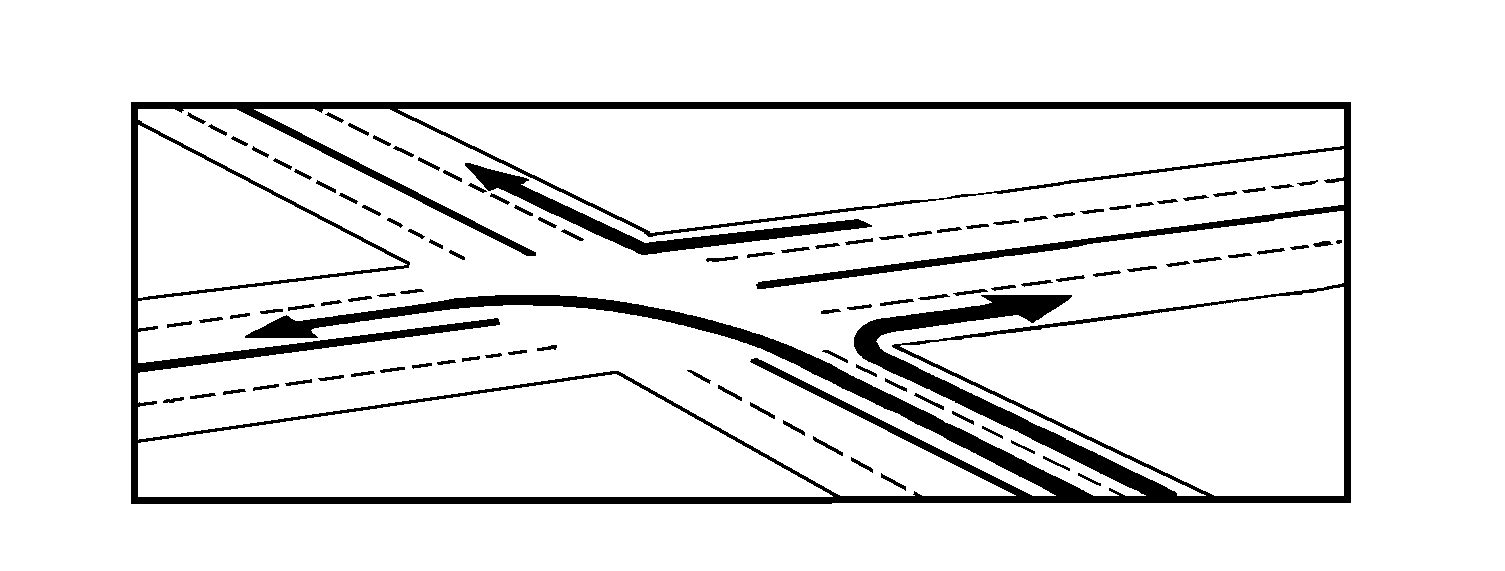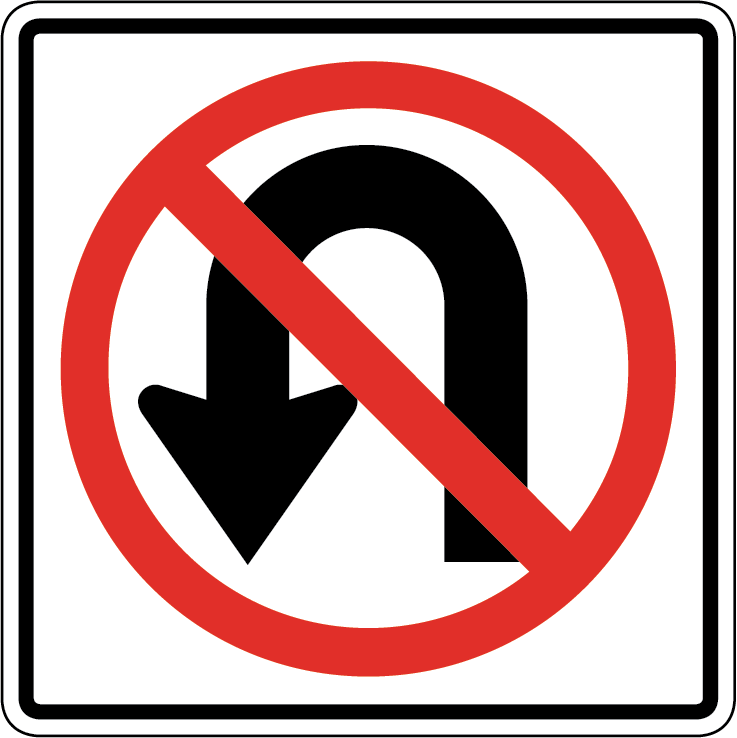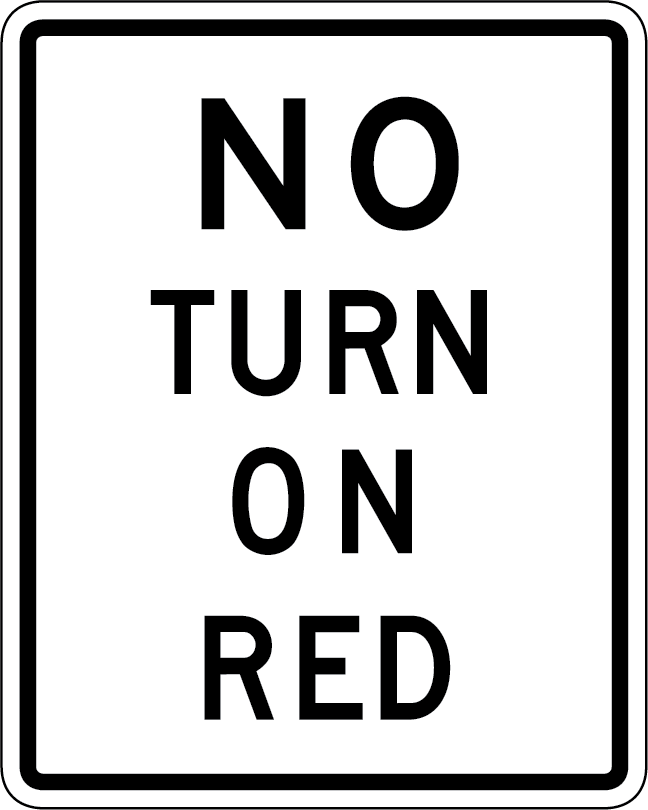Turning, Merging, And Passing
Teen Crash Fact
Improper or careless turning is a common cause of crashes among new, young drivers. In 2017, improper or careless turning was a factor contributing to 459 crashes involving drivers age 17 in Pennsylvania.
You must concentrate on many factors when making a turn. Speed is probably the most important factor. When turning, reduce to a speed that allows you to maintain control of your vehicle, allows you to stay in your lane during the turn and allows you to react to unexpected situations. Watch out for pedestrians and for other traffic in the street you are turning onto. Many streets have signs, signals or markings to guide you. Some signs show what lanes you can or must use for turns.
To complete a turn safely:
- Signal three to four seconds before your turn.
- Position your vehicle in the proper lane.
- Control your speed.
- Complete your turn in the proper lane.
Left And Right Turns

On two-lane, two-way streets or highways, make left turns from as close to the centerline as possible. Make right turns from as close to the right edge of the roadway as possible.
To turn left on multi-lane streets and highways, start from the left lane. If you are turning right, start from the right lane. If you are turning onto a highway, which has more than one lane in the direction you wish to travel, turn into the closest lane going in that direction. Turn into the left lane when making a left turn, and turn into the right lane when making a right turn. If you want to change to another lane, wait until after you have safely completed your turn.
Turning From Or Into A Center Turn Lane
If you see a lane in the middle of a two-way street marked on both sides by two lines — one solid outer line and one broken inner line — it means this lane may only be used for left turns (Refer to the diagram in
Chapter 2). Drivers traveling in either direction must use this lane to begin their left turns, and drivers entering the road may also use this lane to end their left turn from a cross street before entering the traffic stream.
There are many possible traffic conflicts in this situation:
- When you enter the center lane to turn left into a driveway or cross street, you must watch for both oncoming vehicles in the center turn lane and vehicles turning from driveways and cross streets (on your left) into the center turn lane.
- When you are turning left from a driveway or cross street into a center lane, you must watch for through traffic coming from your left, as well as for drivers who are already in the center lane preparing to make a turn from either direction.
FOLLOW THE GUIDELINES BELOW TO SAFELY USE CENTER TURN LANES:
- Put on your left turn signal at least three to four seconds before entering the left-turn lane.
- Do not get into the center turn lane too soon. The longer you drive in the center lane, the more likely you are to meet someone head-on coming from the other direction.
- When you enter the center turn lane, enter it completely. Do not leave the back end of your vehicle sticking into the normal travel lane, blocking traffic.
- Turn only when it is safe. Look for vehicles coming toward you in the same lane, and make sure there is a big enough gap before you turn across oncoming traffic. If entering the center lane from a cross street, watch for through traffic and for center lane traffic preparing to turn.
U-Turns

These are permitted only if they can be made without endangering other traffic. In choosing a place to make a U-turn, make sure drivers coming from all directions are at least 500 feet away from you, and they can see you clearly. U-turns are not allowed on curves or when you are approaching or nearing the crest of a hill. U-turns are also illegal at locations marked with this sign.
Turning Right At A Red Light

Unless you see this sign, you may turn right at a red light if traffic is clear. Before making the right turn, you must always stop first and yield to pedestrians and cross-traffic. If you are turning from a one-way street onto another one-way street, you may also turn left on a red signal after stopping, if traffic is clear and there is not a
NO TURN ON RED sign. This sign is typically placed beside the road on the near side of the intersection and close to the traffic signal on the far side of the intersection.
Crossing Traffic
Whenever you cross traffic, you need enough space to do it safely. The amount of space you need to cross traffic depends on the road, weather conditions, and oncoming traffic.
Remember:
- Stopping halfway across a street is safe only when there is a turning lane provided in the center median large enough to hold your entire vehicle.
- If you are crossing or turning, make sure there are no vehicles or pedestrians blocking your path. You do not want to be caught in the middle of an intersection with traffic coming toward you.
- Even if you have a green light, do not enter an intersection if there are vehicles blocking your way. Wait until you are sure you can clear the intersection before starting to cross it.
- Do not pull out in front of an approaching vehicle with its turn signal on to enter or to cross a street. The driver may plan to turn into a street or driveway just beyond you, may have changed their mind or may have forgotten to turn off the signal. This is especially true of motorcycles; their signals may not turn themselves off. Wait until the other driver actually starts to turn before you go.
- Use extra caution when crossing traffic in areas with hills or curves, where you cannot see or be seen as well.
Merging With Traffic
Merging with traffic also demands good driver judgment. Whether you are changing lanes on a highway or entering a highway from a ramp, you need enough space to move safely into the traffic stream.
Entrance ramps for highways often have acceleration lanes. These lanes run beside main traffic lanes and should be long enough to allow you to accelerate to the speed of traffic before you enter the highway itself. These lanes also allow drivers on the highway to see you before you enter the road. It is illegal to pass a vehicle ahead of you in an acceleration lane.
Follow These Three Steps to Merge with Traffic from an Acceleration Lane:
- Put your turn signal on, and look for an opening in traffic.
- Accelerate up to the speed of traffic.
- Merge into the opening in traffic.
Passing
Passing is an important part of driving; if not done properly, passing can be a very dangerous or even fatal maneuver. Use the following guidelines.
In general, if there is enough clear road ahead of you to attempt a pass, you still must:
- Look for signs and pavement markings that tell you when you can or cannot pass safely under normal driving conditions. (Examples of these can be found in
Chapter 2.)
- Look ahead carefully before you start to pass and check for any dangers in the passing area, such as driveways from which a vehicle could enter the roadway during your passing maneuver.
- Look in your side and rearview mirrors and quickly check your blind spots to make sure there are no vehicles about to pass you when you start to pass.
- Before passing, make sure the passing lane is clear and give the proper turn signal to show you are going to change lanes. Signal early enough so others will know your plans in advance.
- After passing, signal your plan to return to your lane.
- Before you move back into the lane, make sure you can see both headlights on the front of the vehicle you passed in your rearview mirror.
Teen Crash Fact
Driving on the wrong side of the road is a frequent factor contributing to crashes among 16- and 17-year-old drivers. From 2013 to 2017, there were 384 crashes and 15 people killed.
When passing, be extra careful in areas where vehicles or pedestrians might enter or cross the road. These places include crossroads and shopping center entrances and exits. Also, a driver turning onto the roadway and into the left lane will not expect to find you in that lane and may not even look your way.
On A Two-Lane Road
Passing on a two-lane road requires good judgment to avoid a head-on collision because you must use a lane belonging to oncoming traffic. At 45 mph, this translates into 1/4 mile of clear roadway you need to safely pass a slower vehicle.
You need to be going about 10 mph faster than the vehicle(s) you are passing. If there are other vehicles ahead of the vehicle you want to pass, you may pass them as well, but make sure you have a large enough space in front of that vehicle to move into before you begin your passing maneuver.
It is most dangerous to pass at night because you cannot see as far ahead, and it is more difficult to accurately judge distances. If you can only see the headlights of an oncoming vehicle, you are likely to think it is farther away than it really is.
Passing On The Right
Under certain conditions, you may pass another vehicle on the right:
- When the driver you are passing is making or signaling a left turn, the driver of the passing vehicle must stay on the berm or shoulder.
- When driving on a roadway with two or more marked traffic lanes in each direction.
You May Not Pass If
- You are within 100 feet of or are crossing any intersection or railroad grade crossing unless an official traffic control device says you may.
- You are within 100 feet of any bridge, elevated structure, or tunnel.
- You are approaching or are on a curve or a hill crest (top) restricting your view of oncoming traffic.
- You are on the shoulder of a multi-lane highway.